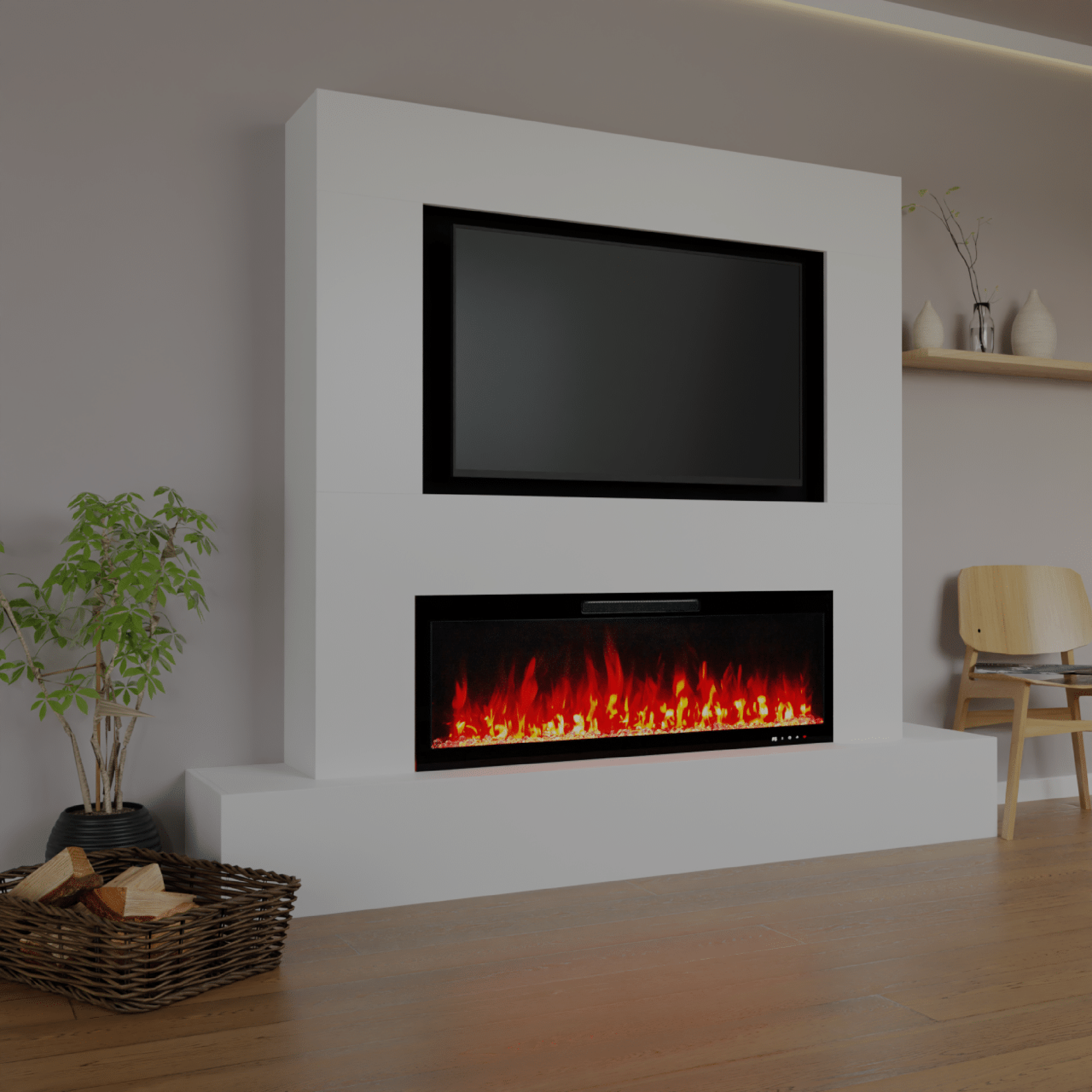introduction
Fireplaces create a cozy and inviting atmosphere that no home should be without. However, not everyone has the opportunity to install a traditional fireplace. This is where alternative solutions such as ethanol fireplaces and electric/water vapor fireplaces come into play. Both offer the advantage of operating without a chimney or complex installation, but they differ significantly in terms of operation, cost, safety, and the flame pattern they produce. In this article, we compare these two types of fireplaces in detail.
Ethanol fireplaces
How it works
Ethanol fireplaces use liquid bioethanol as fuel. This is ignited in a burner, creating real flames. Because bioethanol burns cleanly, it produces no smoke, soot, or ash, making these fireplaces particularly easy to maintain.
Advantages of ethanol fireplaces
- Real flames: Ethanol fireplaces produce real, open flames that provide an authentic fire experience.
- Flexibility: These fireplaces are mobile and can be placed almost anywhere in the room as they do not require a chimney.
- No installation necessary: Since they do not require special ventilation systems, ethanol fireplaces can be put into operation without any structural changes.
- Environmentally friendly: Bioethanol is a renewable fuel that releases only small amounts of CO2 when burned, similar to the amount released by a person when they breathe out.
Disadvantages of ethanol fireplaces
- Low heating output: Although they produce real flames, ethanol fireplaces provide only limited heat, making them more of a decorative element.
- Fuel costs: Bioethanol is comparatively expensive and must be refilled regularly, which leads to ongoing costs.
- Security risks: Because open flames are used, there is a certain risk of fire, especially if the fireplace is operated improperly.
- Odor formation: When ethanol is burned, a slight odor can develop that some people find unpleasant.
Electric and steam fireplaces
How it works
Electric fireplaces simulate the appearance of flames using LED lighting or water vapor. Opti-Myst technology, a special type of water vapor fireplace, uses water mist and light to create a deceptively realistic flame image that's almost indistinguishable from real fire. These fireplaces can also have an electrically powered heating function.
Advantages of electric and steam fireplaces
- Maximum security: Since no real fire is created, there's no danger from flames or flying sparks. These fireplaces are therefore particularly safe, even for households with children or pets.
- Low maintenance: There is no ash or soot to clean, and the water tank only needs to be refilled occasionally.
- Diverse design options: Electric fireplaces are available in a variety of designs that can be seamlessly integrated into any room concept.
- Integrated heating function: Many models offer an additional heating function that can be regulated in several levels.
- Cost-effective operation: The electricity consumption is relatively low, especially compared to the running costs of bioethanol.
Disadvantages of electric and steam fireplaces
- No real fire: Although the flame image looks deceptively realistic, it is not real flames, which could make the experience less authentic for some users.
- Dependence on electricity: These fireplaces rely on an electrical source and therefore do not work during power outages.
Comparison and conclusion
The choice between an ethanol fireplace and an electric or water vapor fireplace depends largely on individual needs and preferences. Ethanol fireplaces offer real flames and great flexibility in placement, but they come with higher running costs and a certain safety risk. They are ideal for those who value the experience of a real fire and are willing to accept the associated costs and precautions.
Electric and steam fireplaces offer a safe, low-maintenance, and flexible alternative that impresses with a stunningly realistic flame appearance. They are ideal for households seeking a safe and cost-effective solution to enjoy the ambiance of a fireplace without the risks of an open fire. Their integrated heating function also makes them a useful heat source.
Overall, both types of fireplaces offer unique benefits, and the choice depends on whether you prefer the authentic experience of a real fire or the safety and convenience of a modern, technology-enabled fireplace.

















